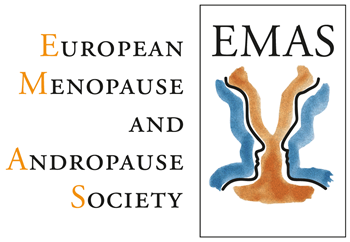Host: Welcome to today’s podcast Practicalities – Transition from sequential to continuous MHT. This episode is part of a podcast series supported by Abbott. The content is solely the responsibility of EMAS, the European Menopause and Andropause Society. All our episodes are available in English, Spanish, Mandarin, and Russian and you can find them on any of the most popular podcast platforms.
In today’s episode Dr. Antonina Smetnik, Head of the Department of Gynecological endocrinology of the National Medical Research Centre for Obstetrics, Gynecology and Perinatology, Moscow, Russia, will help us understand how we can change the regimen of combined MHT from sequential to continuous.
Dr. Antonina Smetnik: Dear colleagues, let’s discuss how we can change the regimen of combined menopausal hormone therapy from sequential to continuous.
In symptomatic perimenopausal women, we usually start with sequential menopausal hormone therapy with a low dose of estradiol. For example, 1 milligram of oral estradiol plus progestogen added in a sequential manner. The response should be assessed on an individual basis in one to three months, with possible increase of the dosage of estradiol, for example, to 2 milligrams of oral estradiol, if the symptoms persist.
Patients with early and premature menopause or patients with premature ovarian insufficiency should start menopausal hormone therapy with the standard dose of estradiol, usually in a sequential regimen. In poor responders, as assessed one to three months after the start of MHT, a high-dosage sequential regimen may be considered.
When can we decide to start using continuous instead of sequential combined MHT?
In women who started with MHT after the age of 50, after using low-dosage sequential MHT for one to two years. In women who started MHT before the age of 50, as the woman progresses from the average age of menopause from 51 to 52. In women who experience changes in their menstrual-like bleeding, as two consecutive cycles produce either minor spotting or no bleeding. In women who wish to end monthly bleeding after using low dose sequential MHT for at least 12 months to prevent breakthrough bleeding.
And the woman may just start a new package of continuous combined MHT instead of a new sequential one. And if we know that the ultrasound examination shows some follicles in the ovaries it might be early to change the regimen from sequential to continuous. When our patients start continuous combined MHT after sequential, we should warn them that during the first six months, there might be some spotting but it is usually normal. If the bleeding is cyclical then we understand that it’s been early to change the regimen and we can recommend to return to a sequential regimen. If the bleeding is abnormal, we should define the reason. In the case of transdermal estrogens in combined menopausal hormone therapy, the rules to change the regimen from sequential to continuous are practically the same.
Thank you for your attention.
Host: Today, Dr. Antonina Smetnik discussed how we can change the regimen of combined MHT from sequential to continuous. Thank you for listening to today’s episode. We hope it will be valuable for your clinical and research practice. Stay safe.
[END]


